AP AH Content Area 6
1/41
Earn XP
Name | Mastery | Learn | Test | Matching | Spaced |
|---|
No study sessions yet.
42 Terms
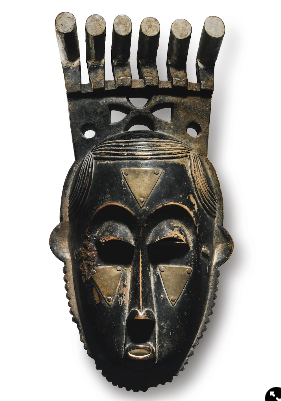
Baule People
Ivory Coast
Early 20th Century
Wood and pigment
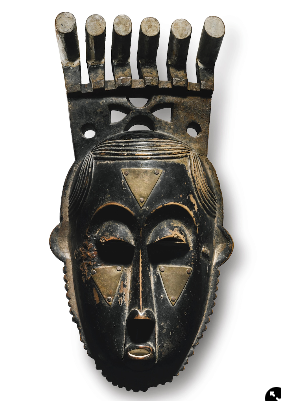
Oval face, elongated nose, small mouth = honorable
Small mouth- don’t talk too much (oral tradition valued)
High forehead = smart
Arched eyebrows and downcast eyes = modesty
Head piece adds beauty
Expression = intense self reflection
Dark skin = health
Realistic hair = beauty

Owie Kimou- her stepson, artist of mask
Used in a performance to pay tribute to most important people in community- only used by experienced dancers (men)
Embodies inner beauty and character
More rare and important than animal masks- not hung as art
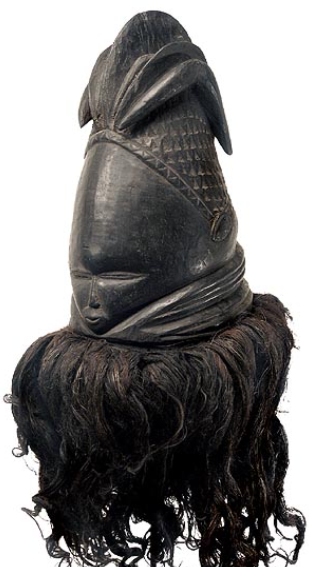
Sande Society, Mende People
West African Forests of Sierra Leone and Liberia
19th to 20th century ce
Wood, cloth, and fiber
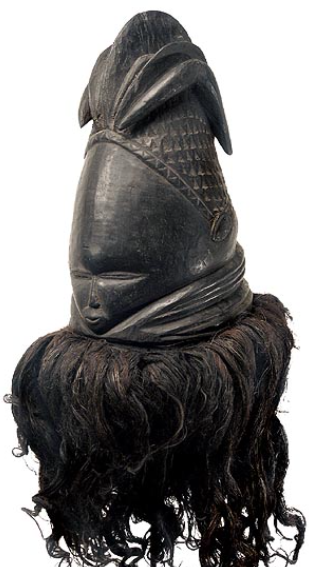
Dark black patina = inner beauty portrayed by outer mask
Downcast eyes = reserved
Small ears and mouth = don’t listen or spread gossip
Elaborate hairstyle = wealth; worn by women of status
Neck rolls (juicy/plump) = have enough fat to bear children
References to a cocoon (not a caterpillar anymore, not quite a butterfly yet)
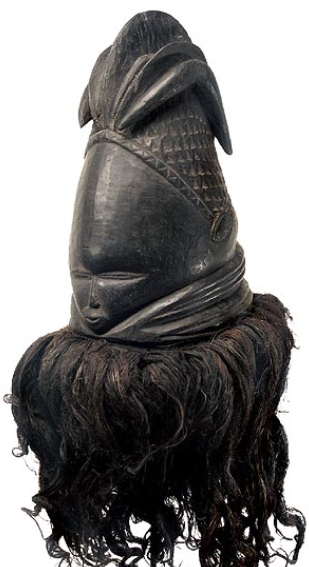
Worn on top of head (not face) by women- person covered by raffia
Used by elder women who prepares girls for adulthood (initiation)
Costumed as a Sowei, female water spirit
Message conveyed through dance
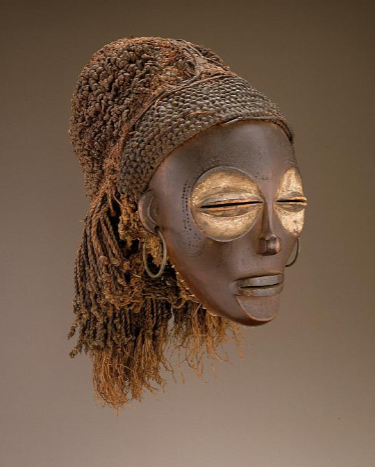
Chokwe People
Democratic Republic of the Congo
Late 19th to early 20th century ce
Wood, fiber, pigment, and metal

Closed mouth = doesn’t have to talk, deserves respect
Elaborate hairstyle
Broadest part: eyes, ears, and forehead
Big eyes- draw attention

Matrilineal society- family line passed down through mother
Honor founding female ancestors
Outfit: wooden breasts, men covered in raffia
Dancers had to act like women = walk gracefully
White eyes = spiritual realm
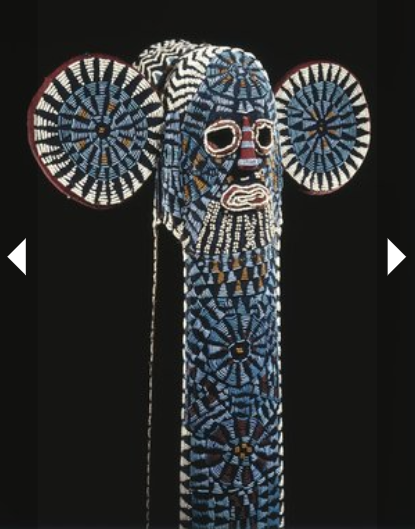
Bamileke: Kuosi (elephant) Society
Cameroon
19th to 20th Century ce
Wood, woven raffia, cloth, and beads
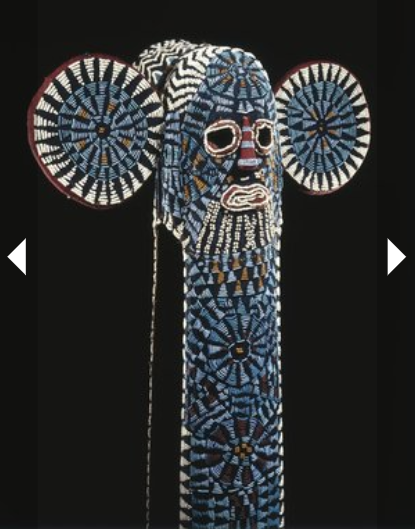
Visual
Highly stylized
Triangles- leopards
Front long panel- elephant’s trunk
Large discs- elephant ears
Embroidered and almost completely covered with beads

Contextual
Used in masquerade to honor king (fon)
Worn with red feather head dress, leopard skin pelt, and full body costume
Leopard and elephant- symbolizes king’s power
Belief: Fon could turn to an elephant, leopard can turn to human
Expresses political stability- only worn by people with great power (never by king)
Beads- wealth (black: night and dead, white: bone, ancestors, red: fon, life)

Conical Tower and Circular Wall of Great Zimbabwe
Shona People
Southeastern Zimbabwe
1400 ce
Coursed Granite Blocks
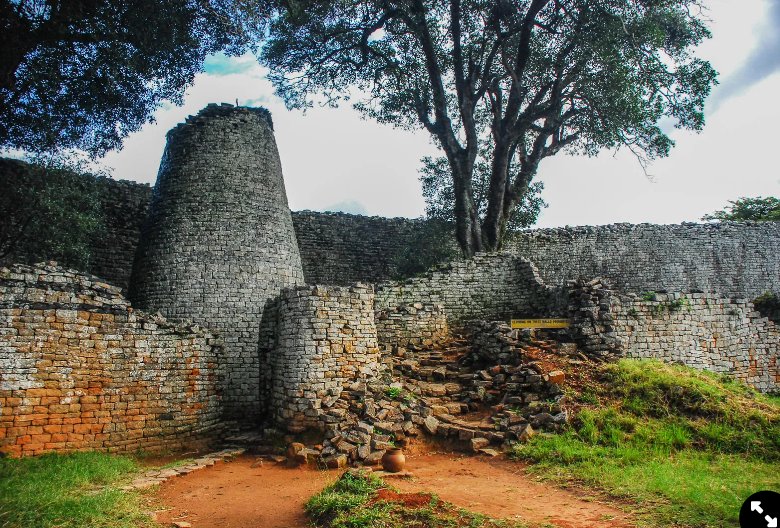
VIsual
32 foot tall walled fortress- entrances only wide enough for one person
Placed highly on ground- ideal for surveillance
Slope inward- stones stacked without mortar
Bird (shaped as male bit)- symbolizes power
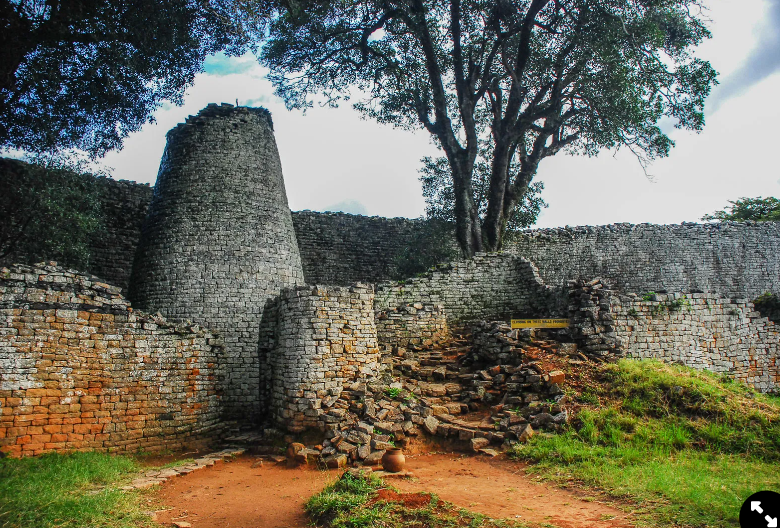
Contextual
Tower- food storage (granary)
Function: City/capitol, not military
Where the government is held and food is kept
Symbolizes power- Shona was abundant in gold and excellent in trading
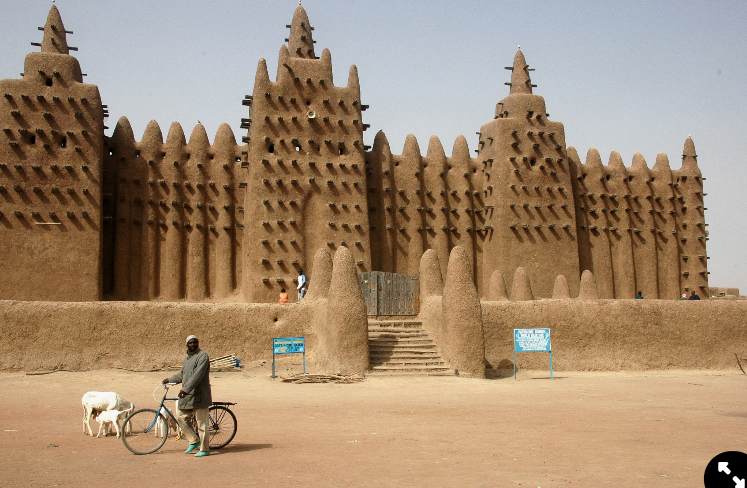
Great Mosque of Djenńe
Islam
Mali
Founded: 1200 ce; Rebuilt: 1906-1907 ce
Adobe (Mud brick)
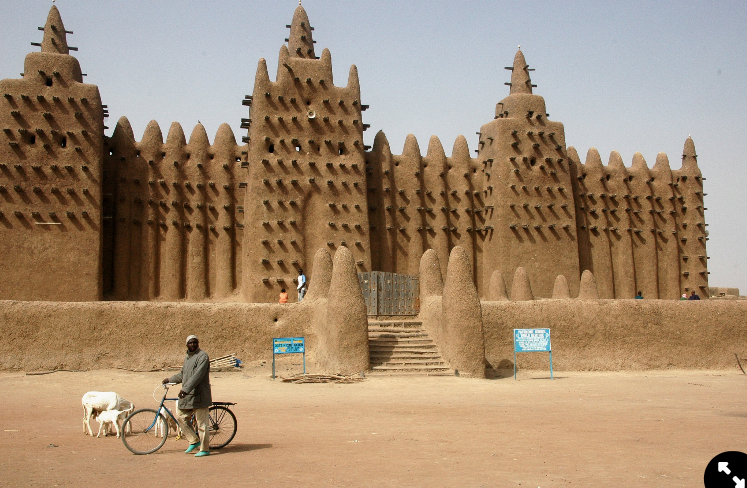
VIsual
Hypostyle hall (hall with rows of columns)
Mihrab (interior niche)
A series of minarets (towers)- ostrich eggs on top
Elevated on platform
Made with mud brick
Torons (beams)- project outward
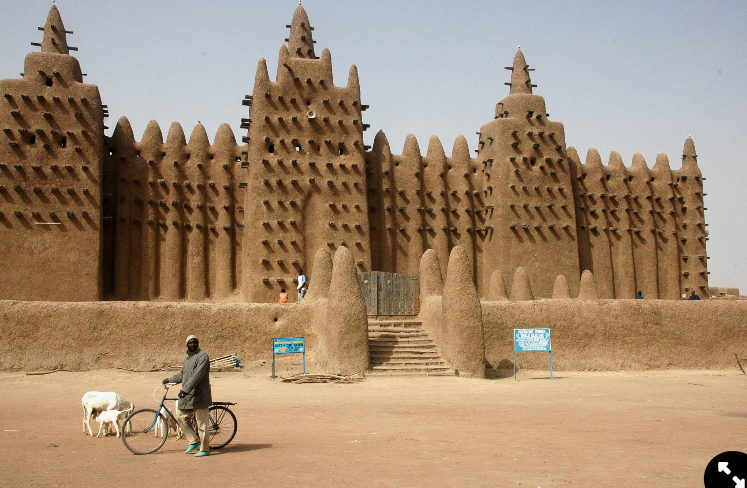
Contextual
Largest mud brick mosque in the world
Hypostyle hall- organize worshippers in rows
Mihrab- directs prayers towards Mecca
Minarets- where muezzin (crier) calls to pray
Elevation- makes mosque stand out
Mud brick- insulates well, easily accessed after rainy season; promotes unity (people gather once a year to repair mosque)
Ostrich egg- fertility and abundance
Torons- acts as ladders for people

Ndop
Kuba People
Democratic Republic of the Congo
1780 ce
Wood

Visual
Freestanding
Polished wood surface
One to three portion used- head is one third the size of statue (emphasized because it symbolizes intelligence)
Generalized features
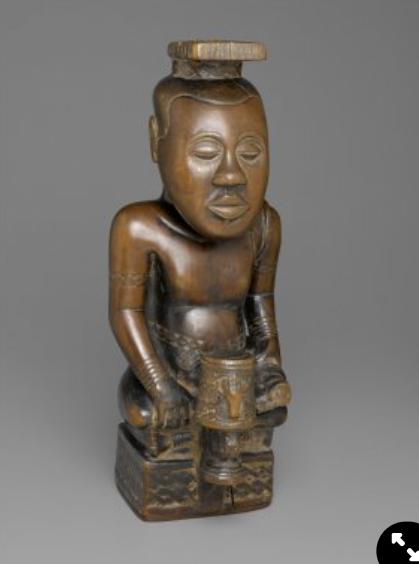
Contextual
Serve as important markers of cultural ideas (physical history instead of oral)
Identified by geometric patterns and ibol (symbol) chosen by ndop: drum with severed hand and clothes
Show regalia attributed to ruler
Displayed publicly to honor ruler
Rubbed with oil to protect from insects
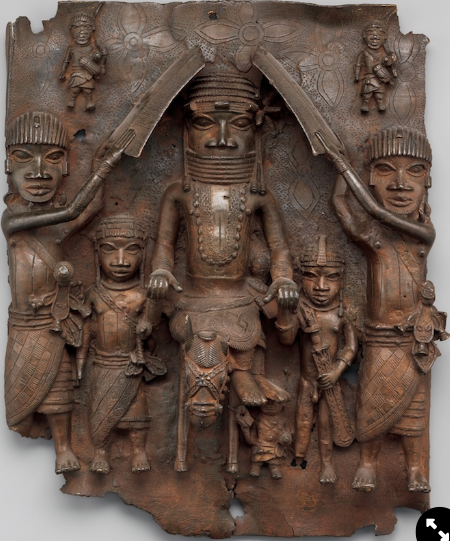
Benin Plaque
Edo People
Kingdom of Benin
16th century ce
Cast brass

Visual
High relief
Brass- lost wax casting technique
Symmetrical figure composition: Oba (king)- largest and centered
Two attendants shielding/protecting oba
Small figure being stepped on- enemy
Generalized features
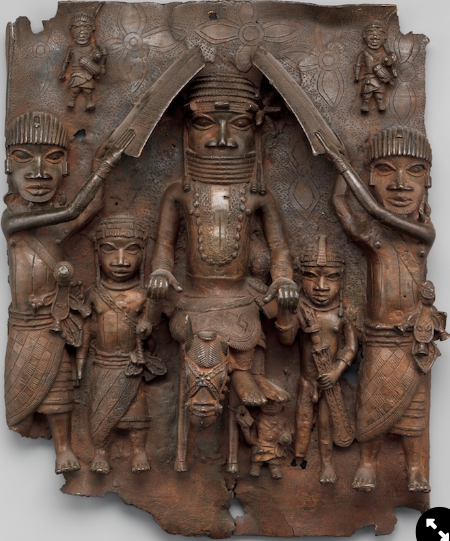
Contextual
Shows off trade with Portugal (brass)
Identifies oba by placement of plaque along post- hung to tell history and lineage
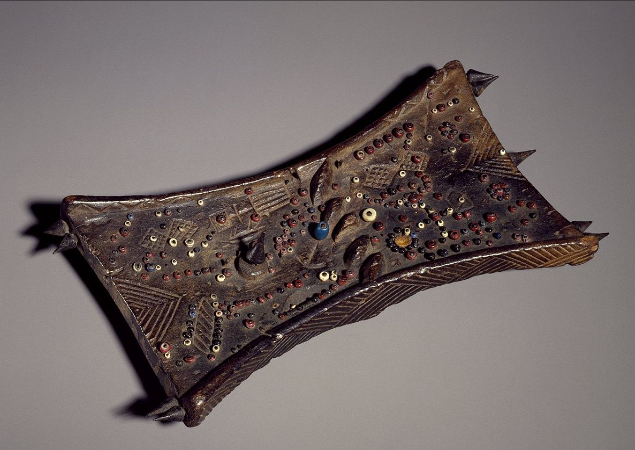
Lukasa (Memory Board)
Luba People
Democratic Republic of the COngo
19th to 20th century ce
Wood, beads, and metal
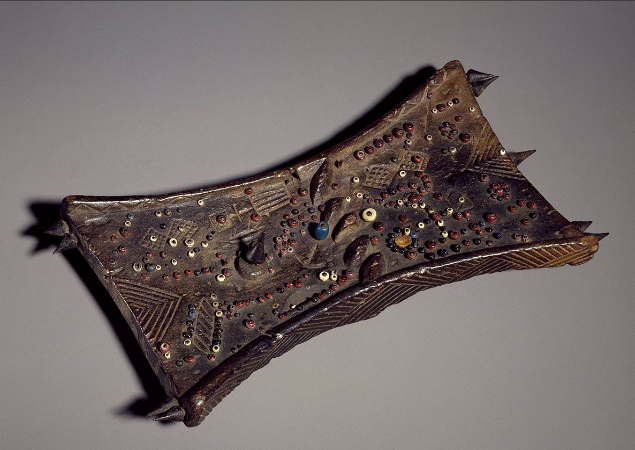
Visual
Hourglass figure- easier to hold
Mixed media
Variety of patterns and designs
Large beads surrounded with small ones (dictates info)
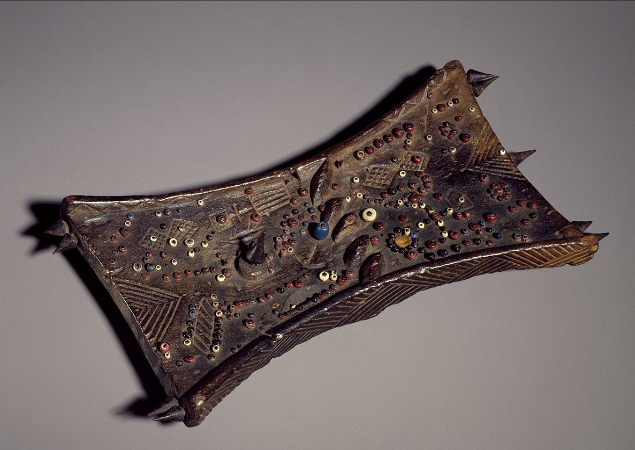
Contextual
Mnemonic device- memory aid
Used in oral retelling- read by touching surface
Traditionally performed with a dance and song
Used to recount history in rituals (read by diviners)
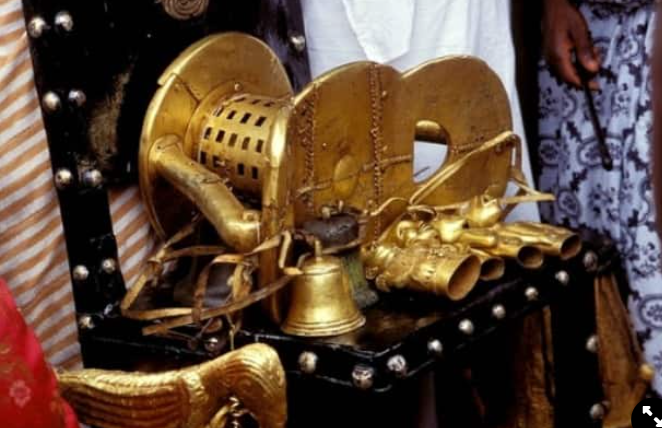
Golden Stool
Ashanti People
South Central Ghana
1700 ce
Gold over wood and cast gold attachments
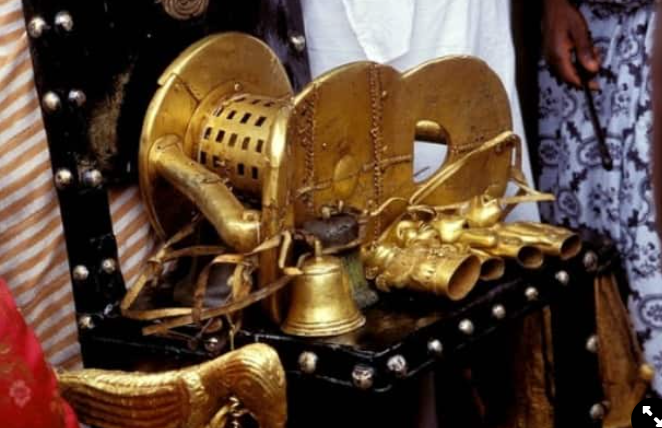
Visual
Covered in gold (wealth and royalty)
Has charms added by each chief
Disk shaped base
Cylindrical column and two diagonal arms like altars of sky god Nyame
Bells- contacting dead and warn ruler of danger
Chain- secure nation
Human form bells- defeated enemies
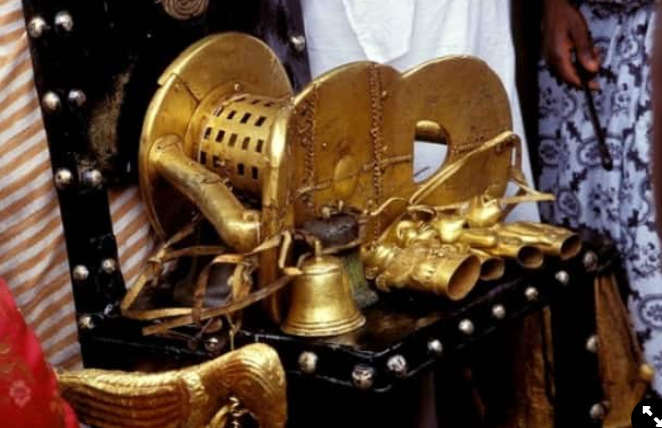
Contextual
“Soul of Asante Nation”
Falls from sky and on the lap of Osei Tutu (first king): “miracle”
Belief: made in heaven
More important than any king- sacred and has its own stool (no one allowed to sit on it)
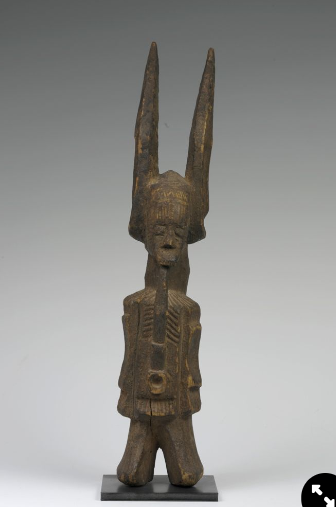
Ikenga (Shrine Figure)
Igbo People
Nigeria
19th-20th century
Wood
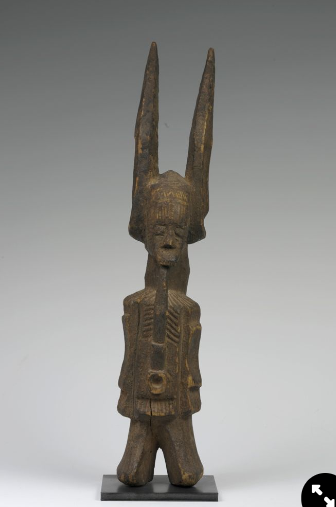
Visual
Human face with animal attributes
Very abstract, sometimes more anthropomorphic
Ram horns- fight with head first
Dots and lines- scarification
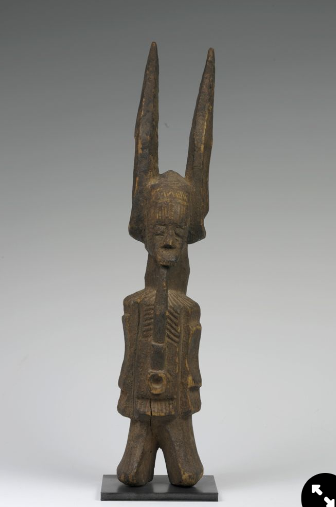
Contextual
Ikenga- power of the right hand
Not a portrait, but a symbol of power
Right hand- sword (power)
Left hand- personalized based off owner’s occupation
“Place of strength”

Reliquary Figure
Fang People
Southern Cameroon
19th-20th century
Wood
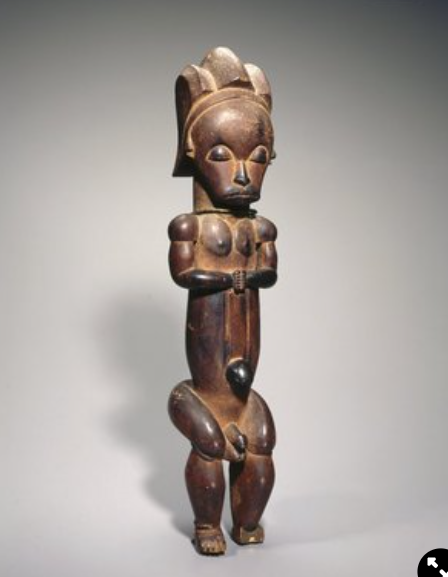
Visual
Elongated torso, large rounded head, downcast eyes
Closed mouth, arms clasped together = balance between calmness and contemplation + power and strength
Emphasis on belly button- umbilical cord
Tube like limbs and body
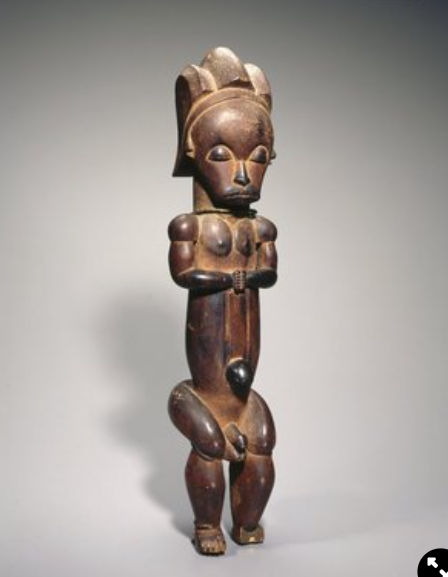
Contextual
Function: Guards reliquary (relics container)
Wards off evil/ serves as warning that content might be harmful
Guarded content: bones of important people and their objects (sacred)
Belly button = human life (guards dead waiting for rebirth)
Used as puppets- educate young men about ancestors
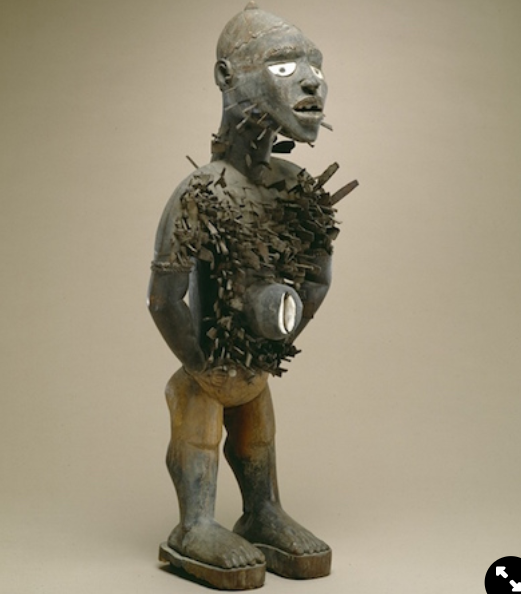
Power Figure
Kongo People
Democratic Republic of the Congo
19th century
Wood and metal
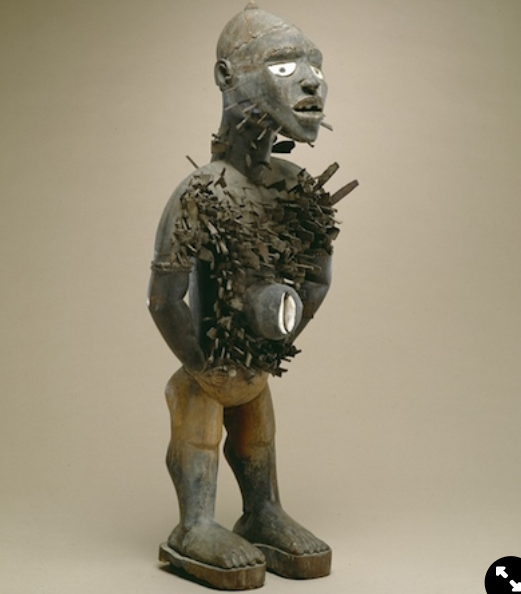
Visual
Nails/ metal pieces- reminder of oath taken
Hands on hips, knees bent = aggressive (ready to act when needed- “hunter”)
White eyes = spirit world (he can see)
Open mouth, tilted head- threatening appearance
Hole- container of “medicine” (activates figure)
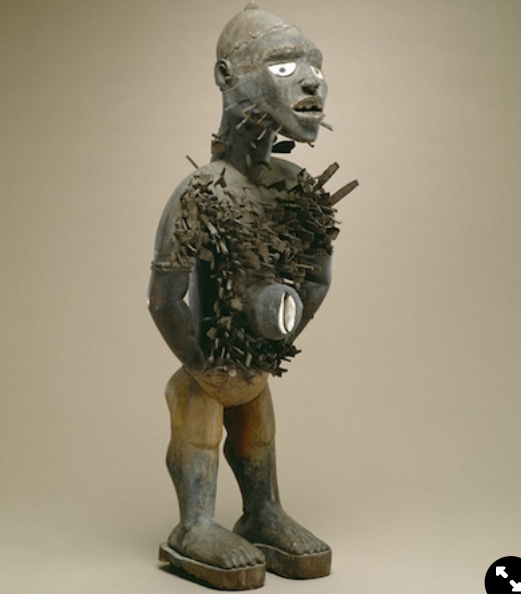
Contextual
Mnemonic device- anyone who breaks their oath will be punished by “hunter”
Function: to bless or harm someone, cause death or give life
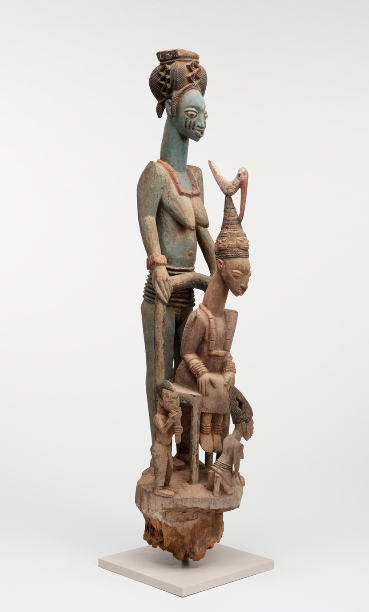
Veranda post of enthroned king and senior wife (Opo Ogoga)
Olowe of Ise
Yoruba People
1910
Wood and pigment

Visual
Complicated and elaborate use of negative space
Large standing figure = senior wife (suggests her support and unknown power) Blue = spiritual power and connection with the other world
Bird= female ancestors of king; “our mothers” (matrilineal)
Crown= has faces of ancestors, packed with medicine inside (soak into his head= power)
King leaning forward (known power) and long neck= artist’s style
Figure next to king (Eshu)= trickster god (maintains stability)
Kneeling woman= junior wife (smaller= lower status)

Contextual
King is the focal point
Function: palace decoration